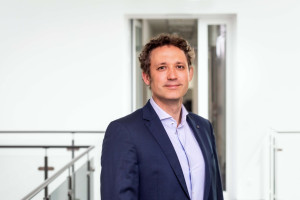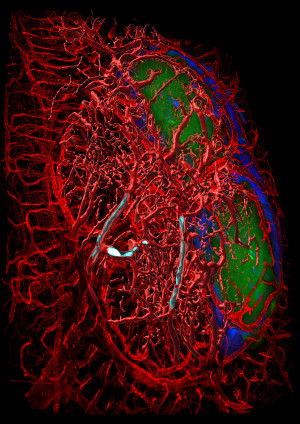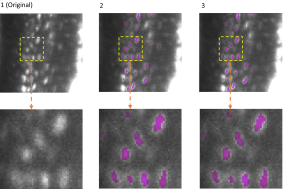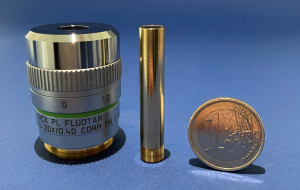Germany: Dortmund / Bad Oeynhausen, 26th November 2025
About four million people in Germany suffer from the life-threatening condition of heart failure. For 50 per cent of them, available drugs are not an option or are only partially effective. Researchers and cardiologists at the Leibniz-Institut für Analytische Wissenschaften – ISAS, Lead Discovery Center GmbH (LDC) and Herz- und Diabeteszentrum NRW (HDZ NRW) aim to expand the range of treatment options for heart failure. They are working on the development of new active substances to specifically improve patient care and quality of life. Their new research project ‘HI-FIVE – GRK5 inhibitors for the treatment of various heart failure entities’ (‘HI-FIVE – GRK5-Inhibitoren zur Therapie verschiedener Herzinsuffizienz-Entitäten’) is being funded by the North Rhine-Westphalia state government and the EU with approximately 2.1 million euros.
In heart failure, the heart no longer pumps enough blood through the body. As a result, organs are not supplied with sufficient oxygen and nutrients. Patients complain about loss of performance, shortness of breath, fatigue and, in advanced stages of the disease, water retention. But not all cases of heart failure are the same; there are different forms: ‘While reduced cardiac output is the most common cause of heart failure in men, in women, an impaired relaxation function of the heart muscle leads to reduced filling of the left ventricle,’ explains Prof. Dr Tanja Rudolph, senior physician at the Clinic for General and Interventional Cardiology/Angiology at HDZ NRW.
New therapeutic approach targets key enzyme
The various manifestations of the disease make it difficult for half of those affected to receive adequate treatment with the drugs currently available. In a previous project, the researchers identified active substances that inhibit the key enzyme GRK5, which is upregulated in heart failure. The HI-FIVE project partners now want to further optimise these GRK5 inhibitors in order to pave the way for a new targeted therapy. ‘In this research project, we will take sex- and age-specific aspects of heart failure into account. This is urgently needed, as age and female sex as factors are still underrepresented in most preclinical and clinical studies,’ says Prof. Dr Kristina Lorenz, Head of the Department of Translational Research at ISAS. The pharmacologist is coordinating the HI-FIVE project.
Research towards preclinical development candidates
A great deal of research and development is still required before individuals with heart failure will benefit from a new treatment option. To ensure the successful translation of findings into application, scientists and physicians are working closely during the three-year preclinical research project. HI-FIVE builds on GRK5 inhibitor lead structures that LDC has previously identified using high-throughput screening, and subsequently validated. The most promising candidates, with good oral absorption, high target activity, and few side effects, are being further optimised in HI-FIVE. To gain a deeper understanding of heart failure, 500 patients at HDZ NRW will be examined for one year regarding symptoms and severity of their disease. To investigate the efficacy of GRK5 inhibitors, scientists are conducting research on human heart muscle cells derived from stem cells, as well as on mice. ‘At the end of the project, we want to reach the next important milestone towards clinical application – a preclinical development candidate – thereby creating new treatment options for millions of patients with heart failure,’ adds Bert Klebl, CEO and CSO of LDC.
Laypeople can find regular insights into research at HI-FIVE and about heart failure in general via www.linkedin.com/company/hi-five-forschung.

The state government of North Rhine-Westphalia and the European Union are funding the project »HI-FIVE – GRK5-Inhibitoren zur Therapie verschiedener Herzinsuffizienz-Entitäten« with approximately 2.1 million euros.
© EU
Downloads
-
PDF (0.12MB)
Press release: New Drug Candidates for the Treatment of Heart Failure
-
JPG (2.04MB)
Photograf of Prof. Dr Tanja Rudolph (HDZ NRW)
(The photo is available for editorial use exclusively for reporting on this subject. Credit: HDZ NRW)
-
JPG (1.94MB)
Photograf of Prof. Dr Kristina Lorenz (ISAS)
(The photo is available for editorial use exclusively for reporting on this subject. Credit: ISAS)





